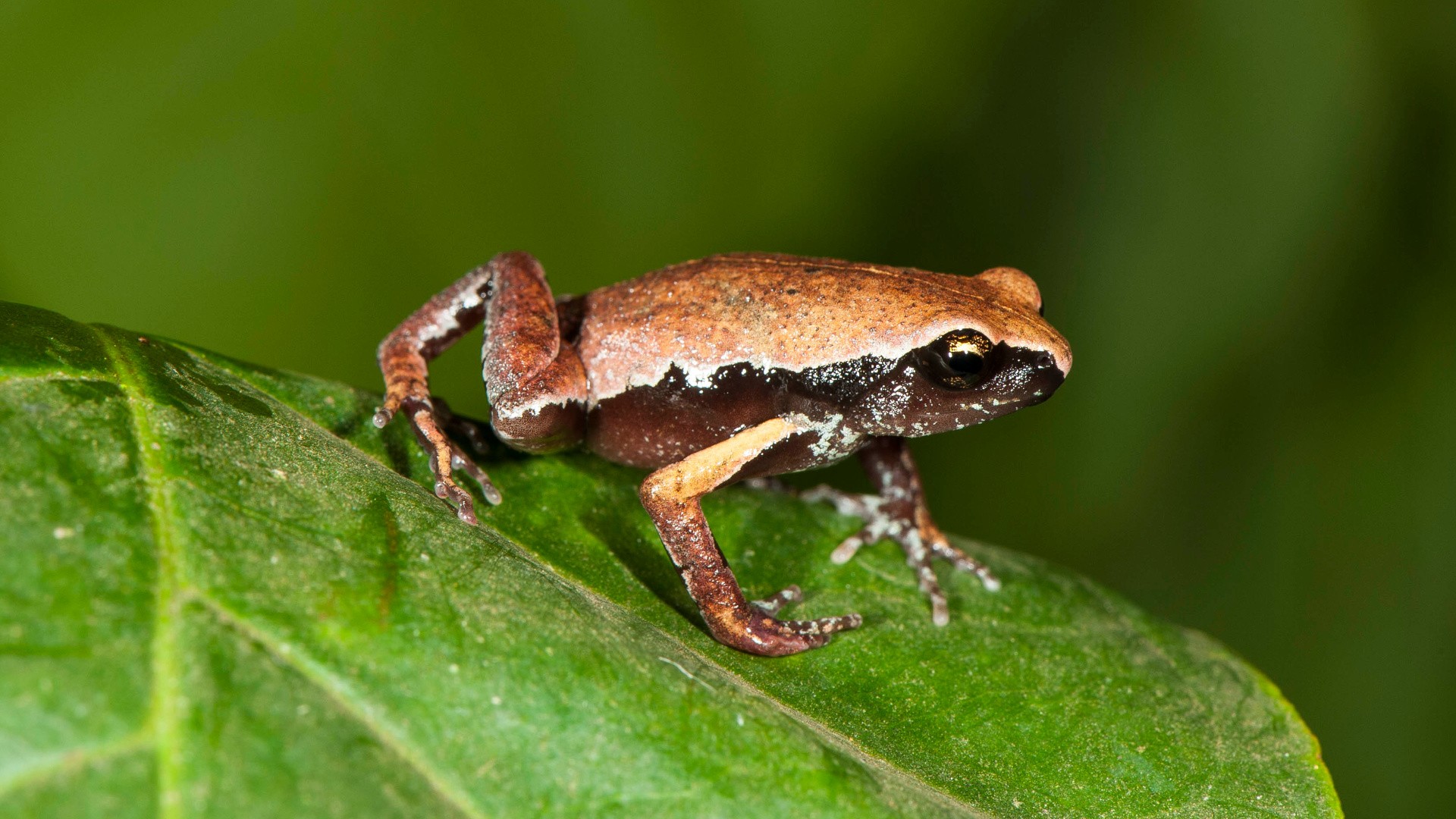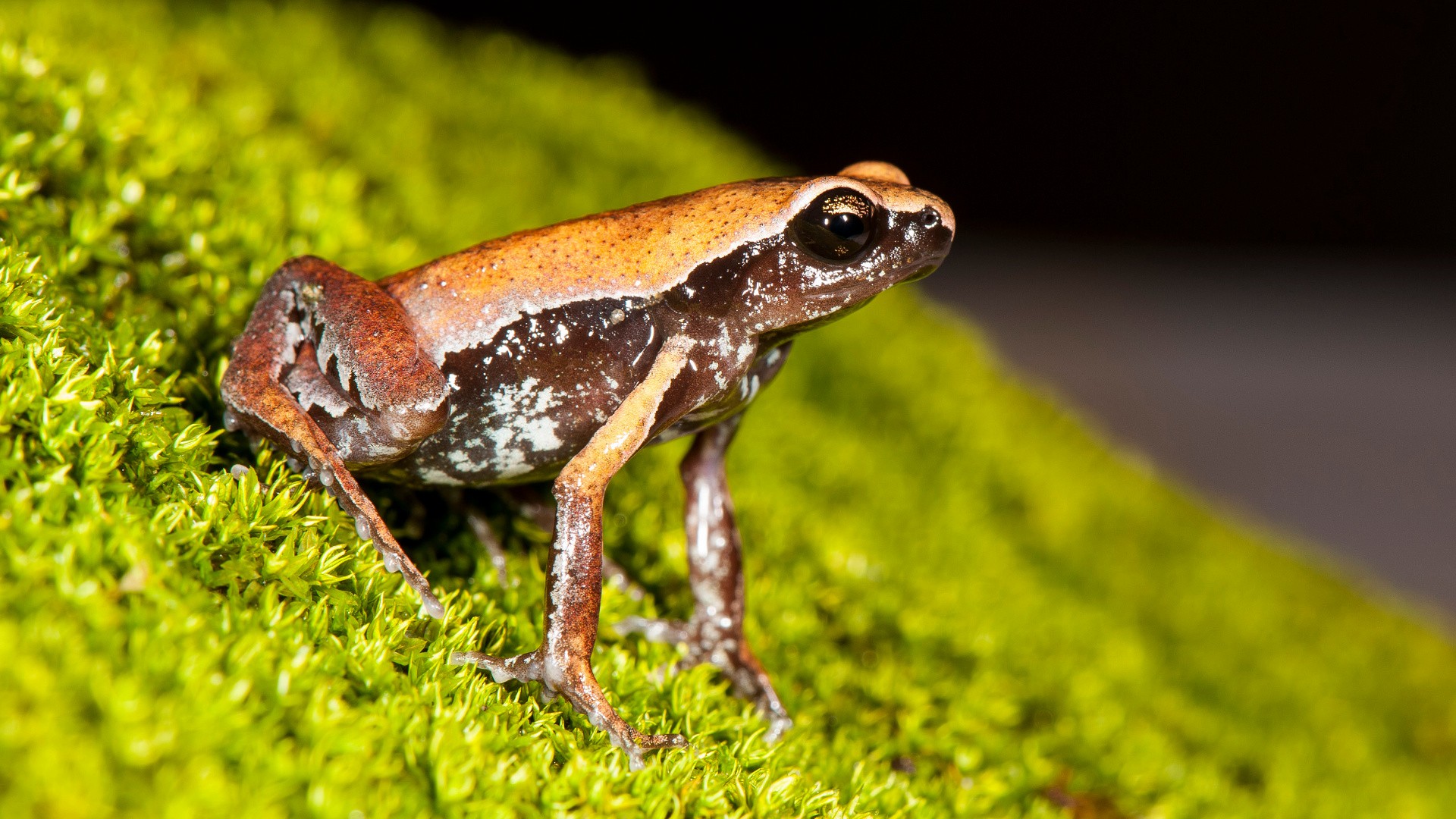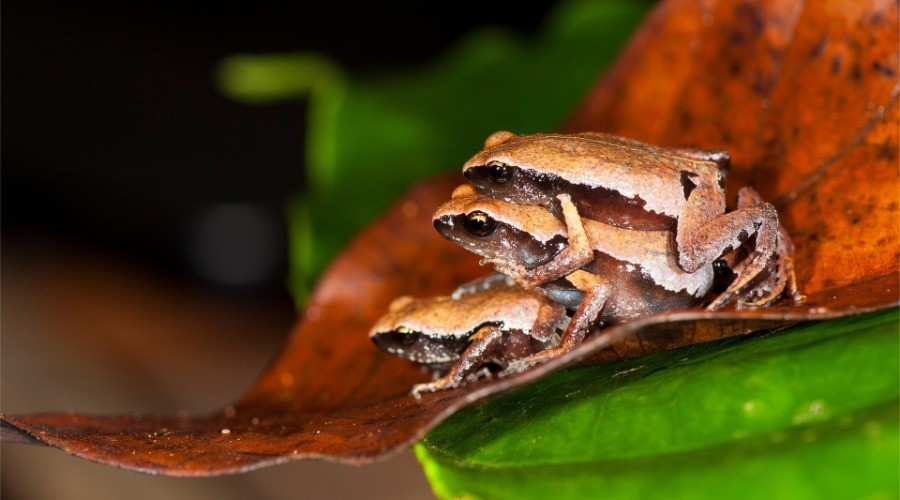New frog species discovered from a roadside puddle in the Western Ghats
Researchers discover new Narrow-mouthed frog species from one of the most explored and researched regions in the Western Ghats.
Amphibian researchers from the University of Delhi have discovered a new genus and species of Narrow-mouthed frogs (family Microhylidae) from a temporary wayside puddle in the Southern Western Ghats state of Kerala.
Sonali Garg, a PhD candidate, and Prof SD Biju, her research supervisor, studied multiple aspects such as external morphology of the adult and larvae, hand musculature, male advertisement calls, and DNA to recognize the genus.
The findings are published in a scientific article in the February issue of the Nature Research Group journal, Scientific Reports. Sonali and Biju have named the new genus Mysticellus (from Latin mysticus meaning ‘mysterious’ and ellus, a ‘diminutive’) and the new species as Mysticellus franki, in honour of the evolutionary biologist Prof Franky Bossuyt from Vrije Universiteit Brussel.

Photograph by SD Biju (Systematics Lab, University of Delhi)
The new genus is endemic to the Western Ghats biodiversity hotspot in Peninsular India. The closest relatives of this frog are found over 2000 km away in Southeast Asia, largely in regions encompassing Indo-Burma and Sundaland Biodiversity Hotspot. The new frog diverged from its Southeast Asian relatives about 40 million years ago during the Eocene epoch.
It is indeed surprising that an entirely new genus of frog went unnoticed until now. Unlike most new discoveries that have resulted from explorations in forested areas, this new frog was discovered from a temporary wayside puddle in one of the most explored and researched areas of the Western Ghats. The new genus is currently known from a single locality and was not found at any other locality despite extensive surveys in the vicinity.
“Our discovery of this new frog genus from one of the most explored and researched regions in the Western Ghats indicates that documentation of amphibians in this globally recognized biodiversity hotspot is still far from being complete. This frog went unnoticed until now probably because it appears for less than four days for breeding activities and lives a secretive lifestyle for rest of the year”, says Sonali.
The discovery came following three years of her field and lab study.

Photograph by SD Biju (Systematics Lab, University of Delhi)
The discovery came following three years of Sonali's field and lab study. The extremely short breeding season of the frog and its disappearance for rest of the year has earned the new genus the common name— Mysterious Narrow-mouthed Frog. Their calls are also very peculiar, resembling that of an insect chorus. The Mysterious Narrow-mouthed Frog has a pair of characteristic black ‘false-eye’ like spots on the lower back.
At the time of calling, males exhibited the behaviour of raising the hind part of their body displaying the two lumbar spots. Similar behaviour is observed when individuals are disturbed, suggesting that these spots serve a defensive role against predators.
The discovery of yet another endemic frog genus from the Western Ghats further highlights the amphibian diversity and endemism harboured in this region. The past two decades have witnessed some remarkable amphibian discoveries from the Western Ghats. New findings, such as this frog, indicate that the amphibian inventory of the region is still far from being complete.
